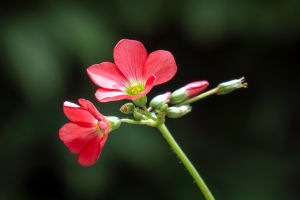Tulips and daffodils are two of the most popular spring flowers, known for their bright colors and cheerful appearance. Both belong to different botanical families and have unique characteristics that set them apart.
If you're planning a garden or simply trying to differentiate between these blooms, understanding the differences can help you appreciate their distinct beauty.
Origin and Classification
Tulips: Tulips belong to the Liliaceae family and the genus Tulipa. They are native to Central Asia and were first cultivated by the Turks in the 10th century. Tulips gained immense popularity in Europe, especially in the Netherlands, during the 17th century, leading to the famous "Tulip Mania."
Daffodils: Daffodils, on the other hand, belong to the Amaryllidaceae family and the genus Narcissus. They are native to Europe and North Africa and have been admired for their beauty since ancient times. The name "Narcissus" comes from Greek mythology, referring to a handsome young man who fell in love with his reflection.
Physical Characteristics
1. Flower Shape:
Tulips have a cup-shaped or bowl-shaped bloom with smooth, symmetrical petals. They come in a variety of shapes, including single, double, fringed, parrot, and lily-flowered tulips. The flowers can be either rounded or pointed at the tips, depending on the variety.
Daffodils have a distinctive trumpet or bell-shaped central corona surrounded by a ring of six petals. This unique structure makes them instantly recognizable.
2. Color Variations:
Tulips are available in nearly every color imaginable, including red, yellow, white, pink, purple, and even multi-colored or variegated patterns. This wide range of colors makes them highly versatile for garden design.
Daffodils typically come in shades of yellow, white, orange, and peach.
3. Foliage:
Tulips have long, narrow, lance-shaped leaves that grow directly from the base of the plant. The leaves are typically green and smooth-edged.
Daffodils have strap-like leaves that are also long and narrow but tend to be thicker and have a slightly ridged texture. The leaves grow in clusters from the base and are usually a darker green than tulip leaves.
Growing Conditions and Requirements
1. Blooming Season:
Tulips generally bloom in mid to late spring, depending on the variety and climate. They are often one of the last spring flowers to bloom.
2. Sunlight Needs:
Both tulips and daffodils thrive in full sun to partial shade. However, tulips generally prefer a bit more sunlight than daffodils. For the best results, plant them in a spot that receives at least six hours of direct sunlight daily.
3. Soil Requirements:
Tulips prefer well-drained, sandy or loamy soil with a neutral to slightly alkaline pH. They do not tolerate waterlogged soil and can suffer from bulb rot if planted in heavy, poorly drained areas.
Daffodils are more forgiving and can grow in a wider range of soil types, from sandy to clay. They prefer well-drained, moderately fertile soil with a slightly acidic to neutral pH.
Symbolism and Uses
Tulips:
Tulips symbolize love, passion, and rebirth. They are often associated with perfect or deep love, making them popular for weddings and romantic occasions. In the garden, tulips are used in mass plantings, borders, and containers to create vibrant displays.
Daffodils:
Daffodils are symbols of hope, renewal, and new beginnings. They are often associated with spring festivals and celebrations and are used to represent cancer awareness in many countries. Daffodils are commonly planted in naturalized settings, rock gardens, and flower beds for a cheerful spring display.
While tulips and daffodils share a common season and bright colors, they differ in many aspects, from their shape and color variety to their care requirements and symbolism. Tulips offer a wider range of colors and shapes, while daffodils are known for their hardiness and unique trumpet-like blooms. Understanding these differences will help you choose the perfect flower for your garden or bouquet.


